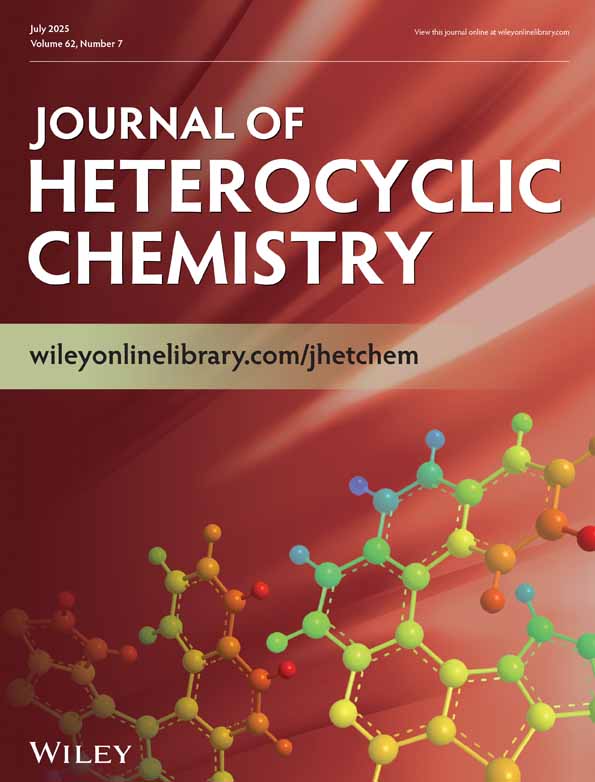Synthesis of 5,6,7,8-tetrahydro-5-oxopyrido[2,3-d]pyrimidine-6-carbonitriles and -6-carboxylic acid esters
Abstract
Dieckmann ring closure reactions of 4-[(2-cyanoethyl)substituted amino]-2-phenyl-5-pyrimidinecarboxylates (Ha-f) afforded several 5,6,7,8-tetrahydro-5-oxo-2-phenylpyrido[2,3-d]pyrimidine-6- carbonitriles (IIIa-f). The open-chain intermediates (IIa-f) were prepared by dechloroamination of 5-carbethoxy-4-chloro-2-phenylpyrimidine (1a) with several 3-substituted amino- propionitriles. Alkylation of the sodium salt of 5,6,7,8-tetrahydro-8-methyl-5-oxo-2-phenyl-pyrido[2,3-d]pyrimidine-6- carbonitrile (IIIa) with methyl iodide in DMF resulted in methylation at C-6 to afford IV. Tosylation of IIIa in pyridine gave the corresponding tosyl ester (V) of the enolic form. Oxidative dehydrogenation at the 6,7-position resulted when IIIa reacted with thionyl chloride, affording 5,8-dihydro-8-methyl-5-oxo-2-phenylpyrido[2,3-d]pyrimidine-6- carbonitrile (VII). Dechloroamination of la or 5-carbethoxy-4-chloro-2-methylthiopyrimidine (Ib) with ethyl 3-ethylaminopropionate followed by Dieckmann cyclization of the resulting open-chain intermediates gave the corresponding ethyl 5,6,7,8-tetrahydro-5-oxopyrido[2,3-d]pyrimidine-6-carboxylates IX'a and IX'b, respectively. These exist predominately in the enol form and undergo alkylation and oxidation reactions similar to IIIa.




